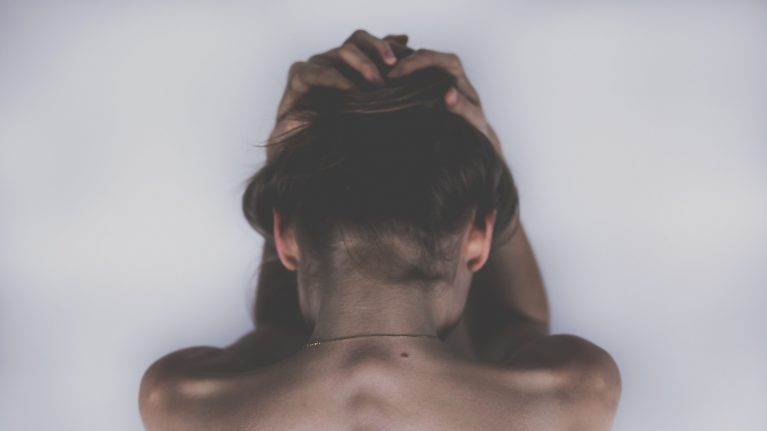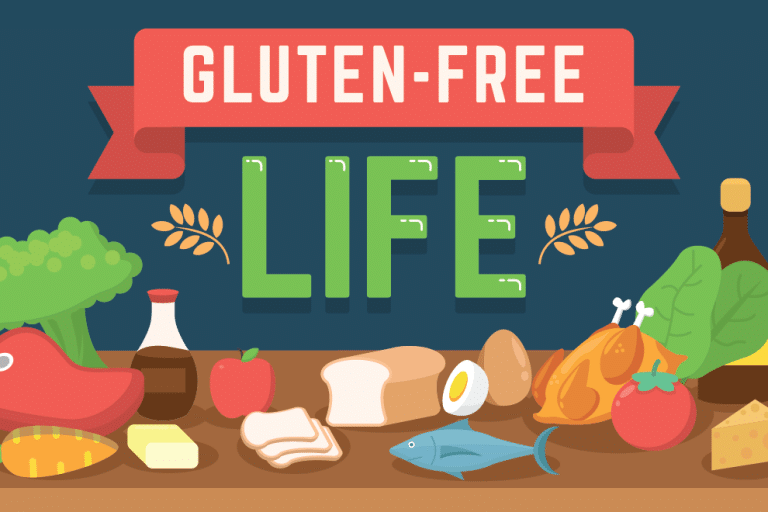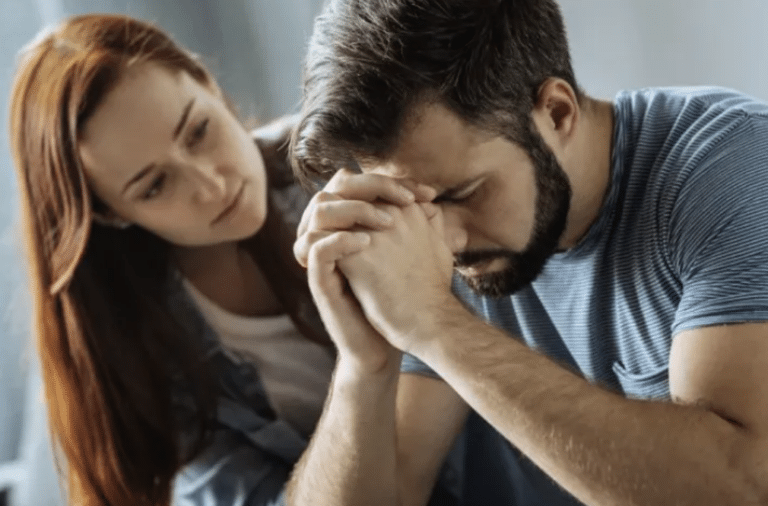34 Eye-Opening Anxiety Statistics & Facts to Know in 2024

Stress is something we all experience at some point. It is a normal, albeit unpleasant, part of life, and it can affect all of us in different ways and at different times.
We usually feel stress due to external factors like work, relationships, or money problems. While stress passes almost as quickly as it arises for most people, it may persist and cause anxiety in some of us.
The following anxiety statistics and facts about the disorder will show you just how prevalent it is in today’s day and age. Hopefully, knowing this information will also help you better understand your condition and help you manage it.
Top 10 Anxiety Statistics for 2024
- Anxiety levels usually peak between the ages of 40 to 59.
- Panic disorders affect over 6 million people in the US.
- Antidepressant use increases with age, with 19% of those over 60 taking them.
- 3.6% of the population have anxiety, as per anxiety statistics worldwide from 2020.
- Four in ten US adults have depression or anxiety symptoms due to the pandemic.
- Almost 3%–5% of children have math anxiety, as per anxiety in children statistics.
- 8% of children and teenagers worldwide have an anxiety disorder.
- 2.2 million Americans have obsessive-compulsive disorder (OCD).
- 25 million people in the EU have anxiety, as per stats on anxiety prevalence.
- 19 million Americans have specific phobias.
Anxiety Statistics Worldwide
Anxiety is a feeling of fear and uneasiness, causing you to feel restless and tense, sweat, and have a fast heartbeat. Also, it’s a common stress reaction. Generally speaking, anxiety disorders are very common across the globe. The following section covers more information on the matter, so make sure you read it.
1. 3.6% of the population have anxiety, as per anxiety statistics worldwide from 2020.
(The Recovery Village)
According to the World Health Organization (WHO), approximately 264 million people have an anxiety disorder. Moreover, anxiety statistics worldwide uncover that anxiety affects 4.6% of females and 2.6% of males. It has also been established that the most common anxiety disorder types are specific phobias.
2. Generalized anxiety disorder is more likely to occur in wealthier countries.
(Medical News Today) (WebMD)
Based on generalized anxiety disorder statistics, approximately 5% of people have this mental disorder in high-income countries, compared to 2.8% in middle-income and 1.6% in low-income countries. Even though anxiety is prevalent everywhere, the disorder shows the highest prevalence in the US.
The most common generalized anxiety disorder symptoms are excessive worry and an unrealistic view of problems. Fortunately, generalized anxiety disorder treatment is available.
3. 25 million people in the EU have anxiety, as per stats on anxiety prevalence.
(OECD)
According to the report on the prevalence of mental disorders in the European Union, anxiety disorders are the most common ones, affecting 5.4% of the population. Depressive disorders are also prevalent in the EU, affecting more than 21 million people, or 4.5% of the population.
Anxiety in America
Anxiety is the most common mental illness in the US. Namely, a third of Americans show signs of depression or clinical anxiety. Let’s keep on reading as the next section goes into more detail about this.
States Ranked by Prevalence of Mental Illness and Rates of Access to Care for Adults
[visualizer id=”99131″]
Note: states ranked 1–13 have a lower prevalence of mental illness and higher rates of access to care for adults. States ranked 39–51 show that adults have a higher prevalence of mental illness and lower rates of access to care.
4. The latest mental health statistics by state uncover that Hawaii has the lowest rates of mental illness.
(Mental Health America)
Also, it has better care access rates for adults. Moreover, right behind it are Iowa, Minnesota, and New York. Be that as it may, the states with the highest rates of mental illness and lowest care access rates for adults are Oregon, Utah, Idaho, as per these mental health statistics.
5. Panic disorders affect over 6 million people in the US.
(Anxiety Centre)
The anxiety epidemic in America is rife. In other words, approximately 2.7% of people in the US have panic disorders, which often co-occur with depression. Additionally, women are about twice as likely to have the disorder compared to men.
6. 40 million adults in the US have anxiety disorders, according to anxiety stats.
(ADAA)
That translates into 18.1% of the population in any given year. In addition, in 2017, around 17.3 million adults in the US had at least one major depressive episode. On the positive side, anxiety disorders are highly treatable.
7. 2.2 million Americans suffer from obsessive-compulsive disorder (OCD).
(Anxiety Centre)
That translates to 1% of the population.
Generally speaking, OCD is an anxiety disorder, which is equally prevalent among men and women. OCD statistics affirm that a third of the affected adults had their first symptoms during their childhood.
Believe it or not, in 1990, of the total $148 billion US mental health bill, 6% of costs were allocated for OCD.
8. 19 million Americans have specific phobias.
(Verywell Mind)
This type of anxiety disorder affects about 9% of US adults, and many of them have more than one specific phobia. Generally, phobias are classified into five categories: animal type, situational type, natural environment type, blood-injection-injury type, and “other” type.
9. Four in ten US adults reported having depression or anxiety symptoms during the pandemic.
(KFF)
Anxiety and depression statistics suggest an increase in depression and anxiety, compared to one in ten adults in 2019. Besides, many people report mental health problems. More specifically, 32% of adults have problems eating, 12% have experienced increased alcohol consumption or substance use, and 36% experience difficulty sleeping due to COVID-19.
10. In the US, 30.9% of those surveyed experienced symptoms of anxiety due to COVID-19.
(CDC)
A survey involving people aged 18 and over has shown the link between the COVID-19 pandemic and anxiety. Notably, 40.9% of the survey’s participants reported at least one adverse behavioral or mental health condition. A shocking 10.7% of the respondents considered suicide in the month preceding the survey.
Anxiety Statistics on the Demographics
The most commonly affected groups are women, adults under 35, and those with health conditions. Read on for more.
11. Women are twice as likely to have an anxiety disorder as men.
(Women’s Health)
There are a few types of anxiety that affect more women than men. Some of them are generalized anxiety disorder (GAD), affecting more American Indian/Alaskan Native women, and social phobia and panic disorder, affecting more white women than women of other races and ethnicities.
12. 8% of children and teenagers worldwide have an anxiety disorder.
(DoSomething.org)
Teenage anxiety statistics remark that the symptoms develop before the age of 21. Furthermore, it’s essential to know that anxiety disorders differ from normal nervousness or anxiousness as they include excessive fear or anxiety, typically causing reactions out of proportion to the circumstances. Also, anxiety disorders can interfere with children and teenagers’ school work.
13. Almost 3%–5% of children have math anxiety, as per anxiety in children statistics.
(Understood)
Math anxiety is an intense feeling of worry or stress when you have to do a math task, which may happen at home or school. What’s more, it may cause children to avoid math, lose interest at school, and do math problems wrong even though they know the correct answers.
14. Anxiety levels usually peak between the ages of 40 to 59.
(The Guardian)
What may take a major toll on this age group is the pressure of looking after children and aging parents. With this in mind, facts about anxiety disorders reveal that middle-aged people are the least happy. In fact, they have such low levels of life satisfaction that even 90-year-olds have better life satisfaction and happiness than them.
15. Millennials represent 40% of all CBD consumers, and many of them use it to relieve anxiety.
(Consumer Reports)
Around 15% of Baby Boomers use CBD, too. Generally, many of the people who have tried CBD assure it eases their anxiety. Thankfully, CBD is now offered in the forms of oil, pills, topical lotions, and tinctures, making its use incredibly convenient.
16. Anxiety and depression statistics note that 50% of people with depression have an anxiety disorder.
(Verywell Mind)
So, a link between the two disorders is marked, forming a tandem determined to take its toll on people’s life quality. Unfortunately, there is still a stigma concerning mental health issues, so many people consider depression or anxiety a weakness and often don’t turn to much-needed treatments.
Anxiety Facts and Stats About Risk Factors
Many factors might trigger anxiety: stress due to an illness, trauma, other mental health disorders, drugs or alcohol consumption, etc. Let’s find out more.
17. People with parents who suffer from anxiety are 2–3 times more likely to also develop the condition.
(NCBI)
A study investigated the prevalence of anxiety disorder in parents and siblings of children with anxiety disorders. It found that children with anxiety disorders were likely to have either a mother with current or father with a lifetime anxiety disorder, but not siblings with this condition.
18. Trauma can cause anxiety, according to anxiety facts.
(WebMD)
If you experience high-stress events, like sexual abuse or violence, before the age of 21, you are more likely to have anxiety later on in life. It may even take the form of post-traumatic stress disorder, and you may relive those events in dreams or obsessive memories.
19. Social media increases the likelihood of developing anxiety.
(Help Guide)
Recent social media anxiety statistics show that social media has been linked to adverse psychological effects such as anxiety, loneliness, depression, self-harm, and even suicidal thoughts. Some other negative experiences caused by social media are fear of missing out, inadequacy about your life or appearance, isolation, self-absorption, and cyberbullying.
20. The decline of free play in children is linked to a risk of anxiety cases in adults.
(Journal of Play)
According to research, play, particularly social play with other children, supports several developmental functions, which promote children’s mental health. So, anxiety facts suggest that if children are prevented from playing, they fail to get their emotional and social skills which are vital for healthy psychological development.
21. Low testosterone may cause anxiety and depression in men.
(Flourish)
Testosterone levels can be tested with blood or saliva tests. If the figures come back low, your healthcare provider might advise you to either take testosterone supplements or start testosterone hormone therapy. Then, it will take from 2 weeks to 3 months to see how helpful the treatment has been.
Anxiety Statistics on the Treatment
If you wonder how to reduce your anxiety symptoms, you can engage in talk therapy, also known as psychotherapy. Perhaps the most effective form of psychotherapy is cognitive-behavioral therapy (CBT). If you want to know more about anxiety treatments, don’t stop reading now.
[visualizer id=”99137″]
Source: Statista
22. Only 36.9% of people actually receive anxiety disorder treatment.
(ADAA)
The apprehension to seek help may well be due to the stigma surrounding mental health disorders. In other words, people generally view anything related to mental health as a flaw or something to be ashamed of.
23. A third of people with social anxiety symptoms wait for 10 years or more before seeking professional help.
(ADAA)
Regardless of the availability of effective treatments, social anxiety disorder statistics find that less than 5% of people with this disorder seek treatment a year after their symptoms appear.
According to the Anxiety and Depression Association of America, a social anxiety disorder can wreak havoc on the people who have it. Social anxiety facts point out that it’s a severe anxiety disorder, as its symptoms can even disrupt everyday life and interfere with occupational performance, social life, daily routines, etc.
24. Music can reduce stress and anxiety in animals.
(Preventive Vet)
Certain types of music have been proven to reduce anxiety in dogs, like reggae, soft rock, or classical music. Furthermore, music therapy is a natural anti-anxiety remedy, also used for sleep disorders.
25. Zoos are now using puppies to help with anxiety, as per interesting facts about anxiety.
(Atlas Obscura)
Even though the friendship between cheetahs and dogs may seem unconventional, this practice has become a great way of relaxing these cats at US zoos, from New York to San Diego. So, just like people, these notoriously nervous cats use surrogate best friends. While some zoos keep dogs with cheetahs all the time, others only let dogs temporarily accompany cheetahs.
26. Antidepressant use increases with age, with 19% of those over 60 taking them.
(RXList) (CDC)
The available drugs include tetracyclic antidepressants, SSRIs or selective serotonin reuptake inhibitors, tricyclic antidepressants, MAOIs or monoamine oxidase inhibitors, etc. Anxiety disorder statistics unveil that 14.4% of people aged 40–59 and 7.9% of adults aged 18–39 use antidepressants.
Other Fascinating Anxiety Facts
College students have been reporting increasing levels of anxiety. Notably, in the fall of 2018, 29.5% of college students claimed they’d felt extreme anxiety in the last two days. Read on to learn other fascinating facts about the disorder.
27. People with anxiety have been proven to view the world differently.
(Mental Floss)
People with anxiety perceive the world differently because their neurological pathways tend to lump both safe and unsafe things together, generalizing everything as “unsafe.” Generalized anxiety disorder facts disclose that people with GAD unintentionally label harmless things as threats, which may further increase their anxiety.
28. Coffee has been shown to increase the adverse effects of anxiety.
(Livestrong)
Coffee is a well-known stimulant, which increases heart rate and causes nervousness, thus increasing anxiety. Astoundingly, caffeine can also cause panic attacks in people who already have an anxiety disorder. One of the lesser-known mental health facts states that caffeine can cause a sense of impending doom, especially in those prone to anxiety.
29. Nomophobia can cause anxiety.
(NCBI)
The anxiety created by not having your phone is called nomophobia, as per facts about anxiety. And in the current phone-obsessed times that we live in, it’s no surprise that nomophobia cases are rising at an alarming rate. What’s more, study results have proven that nomophobia is particularly high in male adolescents, and it’s linked to depression, poor quality of life, and anxiety.
30. Excitement can reduce anxiety.
(Huff Post)
Believe it or not, facts about anxiety discover that getting excited helps with performance anxiety more than trying to calm down. Some of the awful symptoms of stage fright include a dry mouth, a throbbing heart, and sweaty palms.
31. Creative individuals are less likely to develop anxiety.
(Zen Care)
They are also less prone to developing depression, alcohol abuse, schizophrenia, drug abuse, and autism. At the same time, they have greater chances to experience bipolar disorder, and writers, in particular, are more vulnerable to some mental illnesses.
32. Many comedians have admitted that they struggle with anxiety and depression.
(Prevention.com)
Anxiety statistics uncover that quite a number of American celebrities have the condition.
For instance, Ryan Reynolds is reported to have anxiety. During a candid interview with the New York Times in May 2018, the acclaimed actor discussed the disorder.
That being said, the star is just one of the many Hollywood celebrities (some of them comedians) who have come forward and openly admitted long-term struggles with anxiety and depression.
33. The prevalence of anxiety is high in American celebrities.
(WebMD)
As we know, anxiety can occur to anyone, and the people always smiling for the cameras aren’t an exception. Some of the celebrities with anxiety are Oprah Winfrey, Kim Kardashian, Kourtney Kardashian, Kristen Stewart, Adele, Missy Elliott, Emma Stone, Miley Cyrus, and Kristen Bell.
34. There are several ways to reduce your anxiety during COVID-19.
(CDC)
What causes anxiety nowadays is the pandemic. To help yourself and others, you can follow these suggestions:
- Take your time to relax and unwind.
- Take a break from reading, watching, and listening to news regarding the coronavirus.
- Take care of your body: meditate, make sure you exercise regularly, get enough sleep, and eat healthily.
- Talk to people.
- Get vaccinated against the virus.
To Sum Up
Although these thoroughly collected anxiety statistics and facts may seem overwhelming, on the bright side, the condition and the disorders it brings about are among the most treatable mental illnesses. Thankfully, a slew of treatment options is available to those struggling, with psychotherapy and medication being the most common ones.
FAQs
What is anxiety?
In a nutshell, it’s a feeling of fear about what is going to come. Of course, it’s pretty common to experience fear and nervousness in anticipation of some significant events. However, if your feelings of anxiety are severe and last for over six months, interfering with your life, you might have an anxiety disorder.
How common was anxiety in 2020?
In the US, 19 million adults had specific phobias, so it was the most common anxiety disorder in 2020. Moreover, anxiety statistics from 2020 uncover that 15 million adults had social anxiety and 7.7 million adults—PTSD. Also, 6.8 million adults had GAD and 6 million—panic disorders.
Is anxiety genetic?
Researchers believe anxiety is partially genetic, meaning that if one family member has an anxiety disorder, you are also more likely to have it. Be that as it may, your life experiences, like stressful or traumatic events, as well as family upbringing, may also help determine whether you will develop anxiety.
What are the statistics of anxiety?
Some of the statistics confirm that people with the disorder are three to five times more likely to go to the doctor. Furthermore, statistics about anxiety disclose that people with this condition have six times higher chances of being hospitalized due to psychiatric disorders than those without anxiety. Generally, anxiety disorders occur due to several risk factors, such as brain chemistry, genetics, life events, and personality.
What percentage of the world has anxiety?
Worldwide, the percentage of anxiety disorders varies between 2.5% and 7% by country. What’s more, in 2017, anxiety was the most prevalent mental health or neurodevelopmental disorder, with around 179 million females and approximately 105 million males affected by it, according to anxiety statistics.






